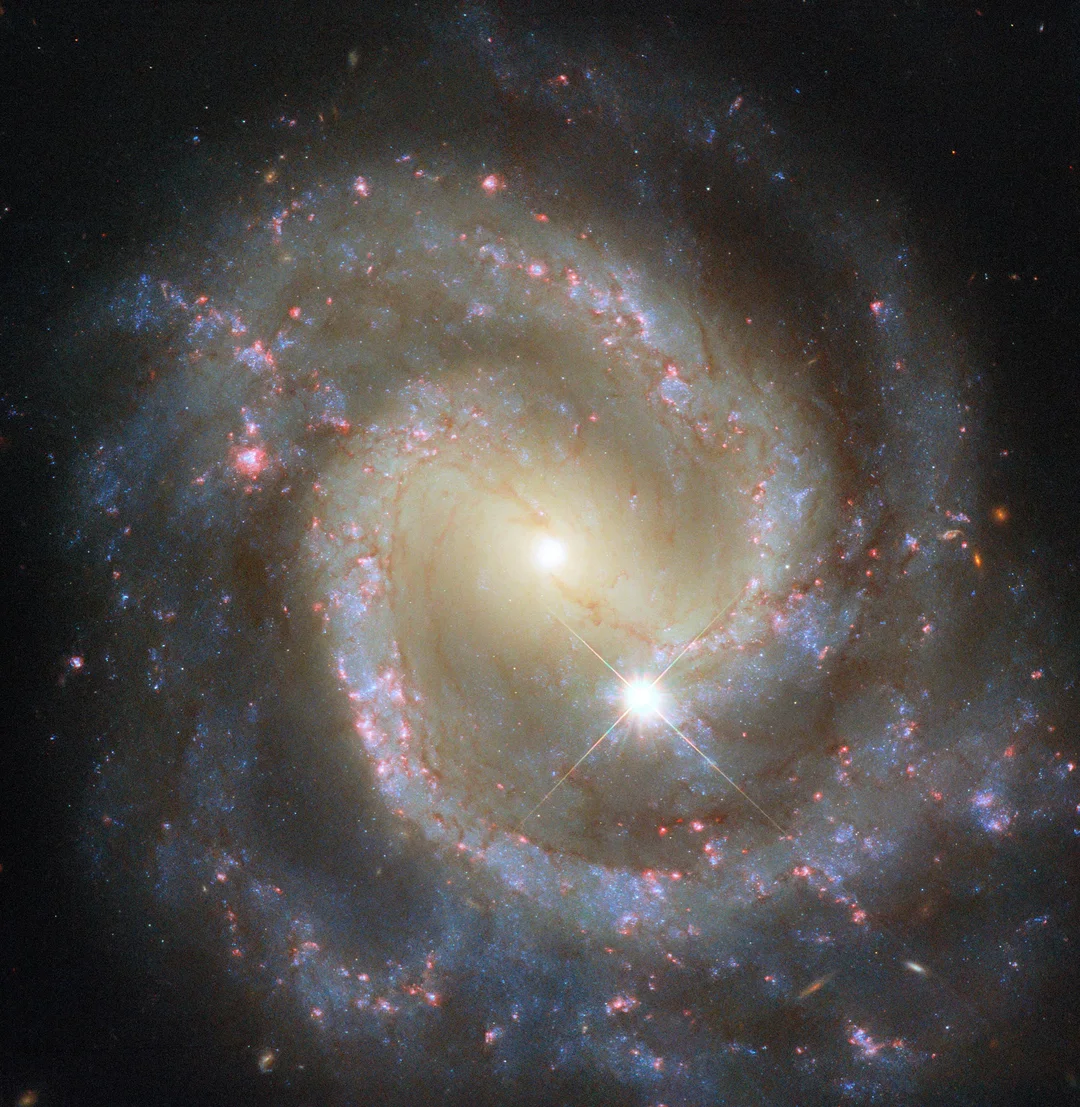
Hubble Captures Stunning Image of Barred Spiral Galaxy NGC 3507
The Hubble Space Telescope has once again delivered a breathtaking image, this time showcasing the beauty and complexity of the barred spiral galaxy NGC 3507. Located 46 million light-years away in the constellation Leo, NGC 3507 is not just another pretty picture; it's a dynamic celestial object teeming with star formation and gravitational interactions. This new image provides valuable insights into galactic evolution and the processes shaping galaxies across the cosmos.

NGC 3507 is classified as a barred spiral galaxy, characterized by a central bar of stars that slices through its core, with spiral arms extending from either end. Dr. Emma Chapman, an astrophysicist at Imperial College London, describes the bar as a "cosmic traffic director," funneling gas and dust towards the galaxy's center and triggering bursts of star formation. Indeed, the spiral arms of NGC 3507 are studded with over 90 young star clusters, and pink spots indicate regions of active star formation.
Interestingly, NGC 3507 isn't traveling alone. It's gravitationally bound to a companion galaxy, NGC 3501, forming a galactic pair. This interaction likely influences the shape of NGC 3507, potentially causing its elongated arms. Dr. Brad Frank from the Space Telescope Science Institute explains that such galactic interactions can "stretch and distort" the shapes of galaxies. While NGC 3507 presents as a quintessentialgalactic wheel, NGC 3501 appears as a narrow strip, showcasing different viewing angles of spiral structures.

Hubble's Wide Field Camera 3 captured this image using multiple filters, revealing details invisible to the naked eye. Dr. Linda Tacconi of the Max Planck Institute for Extraterrestrial Physics notes that this allows scientists to "dissect the galaxy's components," observing star formation regions, dust obscuration, and gas flow.
Barred spiral galaxies like NGC 3507 are surprisingly common, accounting for about 60% of all galaxies. The presence of a bar indicates a galaxy reaching maturity, reorganizing mass and momentum into a dense, linear structure. As Dr. Chapman jokingly puts it, "Bars are like a galaxy's midlife crisis." While active star formation continues, astronomers estimate that NGC 3507 births only two stars per year with a mass equivalent to our Sun. This comparatively small rate, coupled with a supermassive black hole at its core, suggests a complex interplay of forces at play.
The stunning image of NGC 3507 not only provides a glimpse into the beauty of the universe but also opens doors for further research into galactic dynamics and evolution. What secrets will future observations of NGC 3507 unveil?
Share your thoughts and theories in the comments below! What aspects of NGC 3507 intrigue you the most?